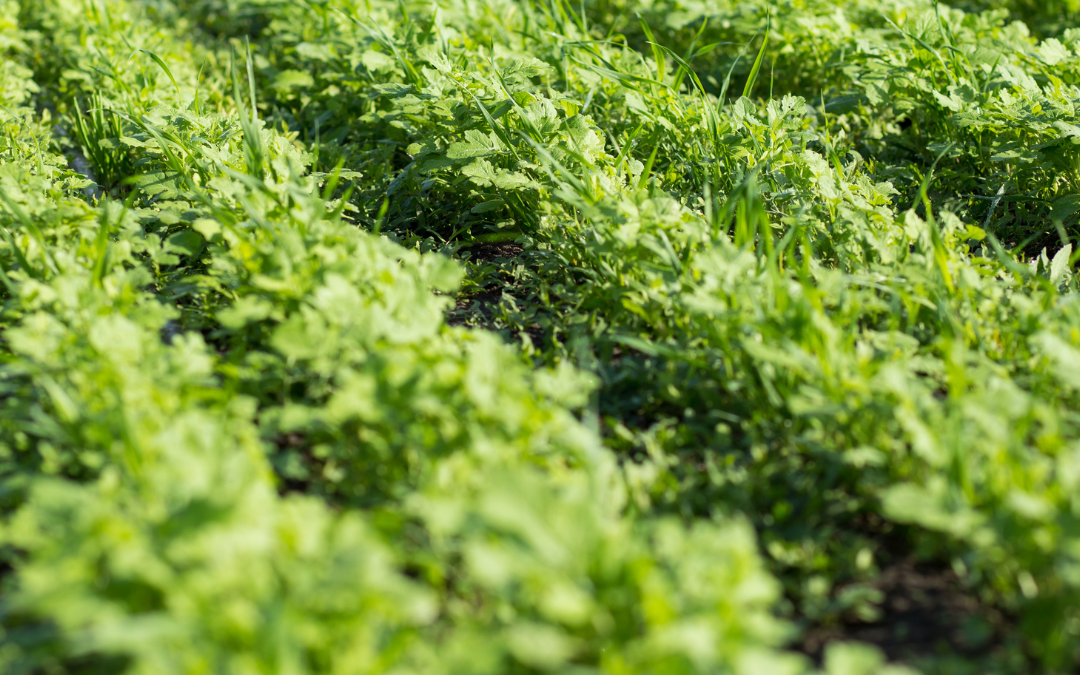Understanding the Importance of Cover Cropping in Sustainable Agriculture
In this fast-paced world, where the focus is often on productivity and efficiency, it’s refreshing to witness a growing movement towards sustainable farming practices. One such practice that has gained considerable attention is the use of cover crops. These humble plants serve as a powerful tool in improving soil health, restoring ecological balance, and promoting organic gardening.
Cover crops are non-cash crops that are planted specifically to benefit the soil and surrounding ecosystem. They work tirelessly beneath the surface, capturing nutrients, preventing erosion, and suppressing weeds naturally. Their presence not only enhances soil fertility but also aids in water retention and reduces the need for chemical fertilizers or pesticides.
Cover Crop Benefits
By incorporating cover crops into agricultural systems, gardeners can enjoy numerous benefits. Firstly, these green companions help prevent soil erosion by anchoring themselves firmly with their roots. This prevents valuable topsoil from being washed away during heavy rains or blown away during windy conditions.
Furthermore, cover crops act as natural pest suppressants by attracting beneficial insects that prey on harmful pests. This reduces the reliance on synthetic pesticides and promotes a healthier ecological balance within farmlands.
The impact of cover crops is not limited to gardens alone; they extend beyond boundaries into our communities and environment. By enhancing soil health through organic practices like cover cropping, we contribute to cleaner waterways by minimizing nutrient runoff from fields. Additionally, healthier soils can sequester more carbon dioxide from the atmosphere – an essential step towards mitigating climate change.
How to Cover Crop in Your Garden
Choosing the right cover crop for your farm or garden is an important decision that can greatly benefit your soil health and overall crop productivity. In this step-by-step guide, we will walk you through the process of selecting cover crops, taking into consideration climate considerations, soil type analysis, and crop rotation planning.
Location: When it comes to selecting cover crops, it’s crucial to consider the climate in your region. Different cover crops thrive in different climates, so understanding your local weather patterns and temperature ranges will help you choose varieties that are best suited for your area. Whether you’re dealing with hot summers or cold winters, there are cover crops available that can withstand these conditions and provide maximum benefits for your soil.
Soil types: Next, conducting a thorough soil type analysis is essential. Different soils have different nutrient levels and drainage capabilities, which can impact the performance of cover crops. By analyzing your soil’s composition and fertility levels, you can identify any deficiencies or imbalances that need to be addressed. This analysis will guide you in choosing cover crops that can replenish specific nutrients or improve soil structure based on its needs.
Planning: Another critical factor to consider is crop rotation planning. Cover cropping is often integrated into a well-planned crop rotation system where different plants are grown in succession on the same land over time. This helps break pest cycles, improves soil health by diversifying root structures and nutrient uptake abilities, and reduces weed pressure naturally. By understanding which plants have been previously grown on a particular plot of land and considering their nutrient demands or disease susceptibility, you can strategically select cover crops that complement or enhance the growth of subsequent cash crops.
By following these steps – considering climate considerations, conducting a thorough soil type analysis, and incorporating crop rotation planning – you’ll be well-equipped to choose the right cover crop for your farm or garden. Remember that each decision plays a vital role in improving soil health, enhancing productivity, and promoting sustainable agricultural practices.
The Best Seeds for Cover Crop Planting
One of the key considerations when selecting cover crop seeds is their ability to effectively suppress weeds. Certain cover crops like annual ryegrass or crimson clover have excellent weed smothering abilities, making them ideal choices for areas with high weed pressure. Additionally, legume cover crops such as hairy vetch or clover species are known for their nitrogen-fixing capabilities, which can contribute to improved soil fertility.
Climate conditions also play a significant role in determining the best seeds for cover crop planting. Some cover crops are better suited for cooler climates while others thrive in warmer regions. For instance, winter rye is well-adapted to colder climates and can provide excellent ground coverage during winter months. On the other hand, sun-loving crops like buckwheat or cowpeas are more suitable for warmer regions where they can grow rapidly and provide effective weed suppression.
It’s important to consider your specific goals when choosing cover crop seeds. Are you looking to improve soil structure? Prevent erosion? Enhance biodiversity? Different cover crops offer unique benefits that align with these objectives. For example, radishes are known for their ability to break up compacted soils with their deep taproots while mixtures of diverse species like oats and legumes can promote biodiversity above and below ground. For a great option that covers many beneficial areas for cover cropping, gardeners love using Renee’s Garden Scatter Garden Seeds Cover Crop. Click the image below to learn how Renee’s has combined some of their best Cover Crop seeds to help gardeners get started on Cover Cropping their gardens.
In conclusion, selecting the best seeds for cover crop planting requires careful consideration of factors such as weed suppression abilities, climate adaptability, and desired outcomes. By making informed choices about which seeds to use in your cover cropping strategy, you can maximize the benefits they provide and contribute to a healthier and more sustainable agricultural system.



